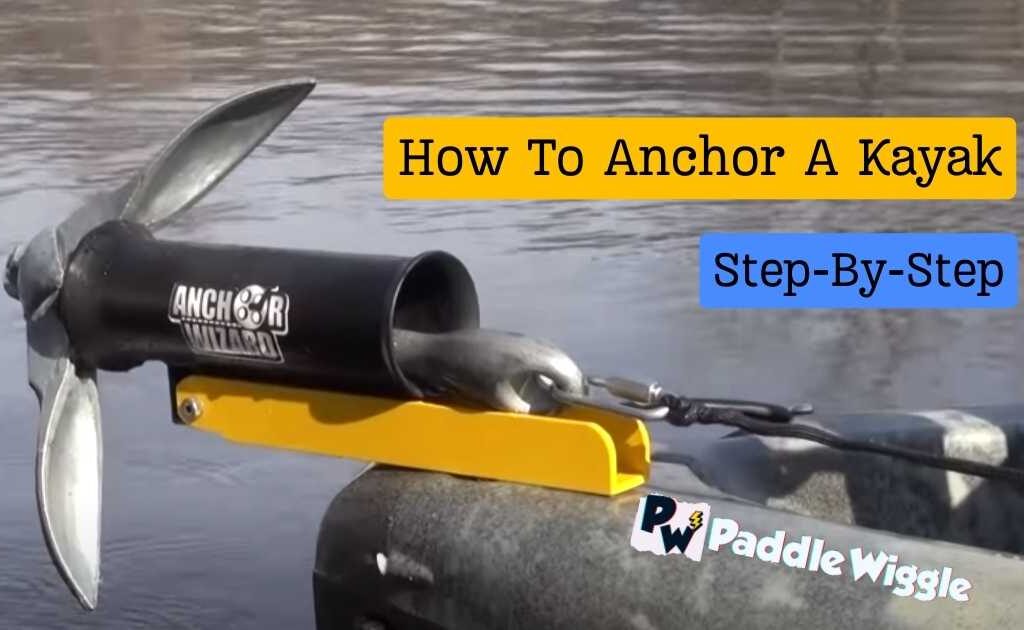Are you tired of dealing with uncomfortable kayak seats while you’re out on the water? Well, it’s time to make your kayaking adventures more enjoyable and pain-free. Uncomfortable kayak seats can really put a damper on your fun.
The good news is that you can turn your kayak seat into a comfortable haven without too much trouble. Having a supportive and comfy kayak seat will let you paddle for longer and enjoy your time on the water to the fullest. There are various options to choose from, like inflatable seats with adjustable support or ergonomic designs that feel like sitting in a cozy lawn chair. No matter your preference, you can upgrade your seat to say goodbye to discomfort and hello to relaxation.
In this guide, we’ll explore the world of kayak seat comfort and show you how to improve your current setup. Whether you’re new to kayaking or an experienced pro, these tips will ensure that every adventure is as comfy as can be.
Contents
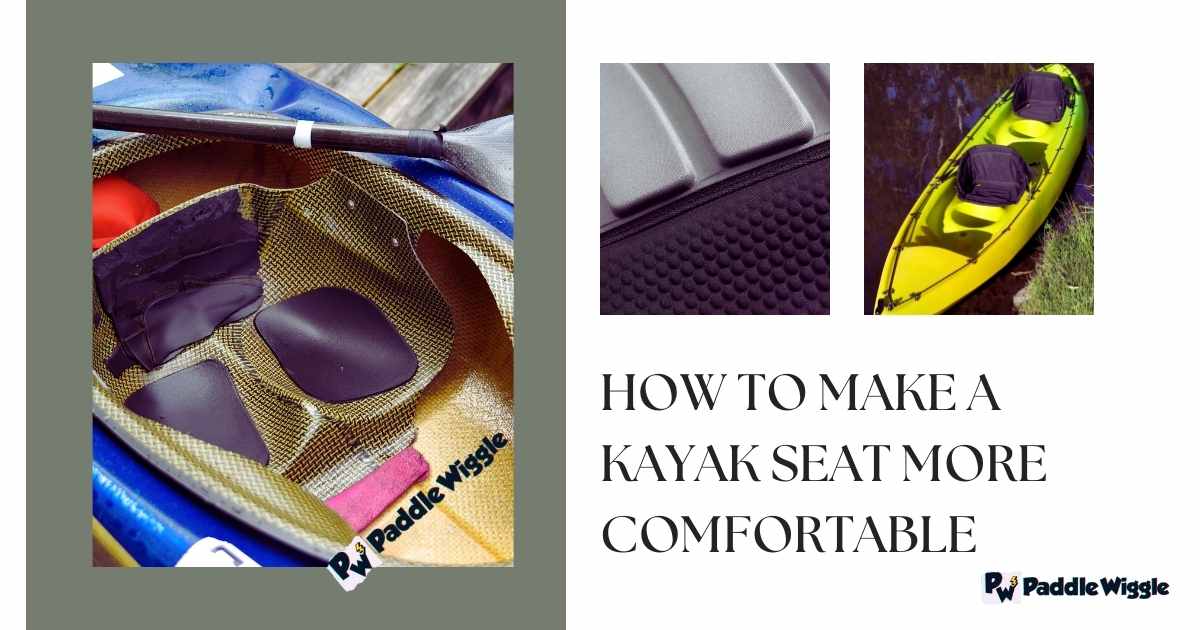
The Importance of High-Backed Seats For Maximizing Comfort
Kayaking is a fun and adventurous water activity where people get to explore calm lakes and rivers while being close to nature. But, if you spend a lot of time on the water without the right support, it can make your back hurt. That’s why high-backed seats are useful. They provide several advantages for kayakers who want to be super comfortable while paddling.
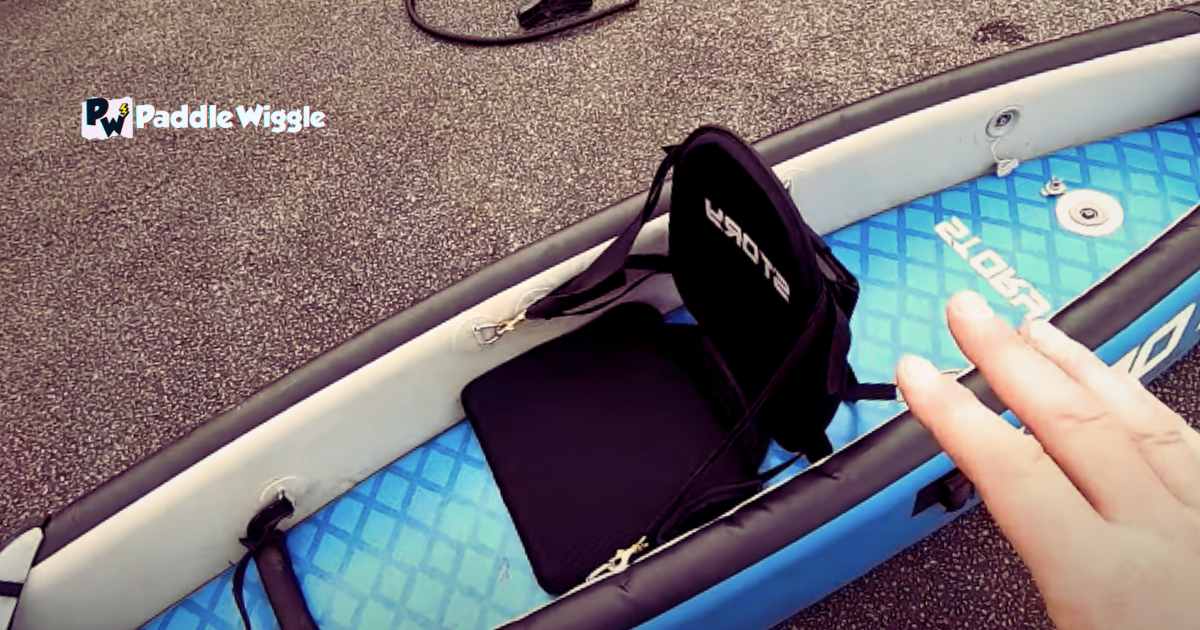

why high-backed seats are crucial for comfort In kayaking?
Having adequate back support is essential. High-backed seats give you the padding and support you need to stay comfortable on the water. These seats are made to help your lower back so you can keep a good posture while you’re kayaking.
how proper back support can prevent fatigue and strain?
Sitting in a kayak for a long time without good back support can make your muscles tired and sore. High-backed seats spread your weight evenly, which makes it easier on your lower back muscles. These seats give you good support, so your muscles don’t get as tired, and you can paddle for longer without feeling uncomfortable.
Benefits of ergonomic design seat for a pain-free paddling experience
Ergonomics plays a vital role in ensuring a pain-free kayaking experience. High-backed seats are chairs in your kayak that are made to fit your back really well. They have shapes that match how your back naturally curves.
This design helps to get rid of the uncomfortable spots and makes it less likely that your back will hurt or feel stiff after a long time of paddling.
how do high-backed seats improve posture and enhance overall comfort?
It’s important to sit up straight when you’re kayaking, not only for comfort but also to avoid getting hurt. High-backed seats help you sit with your spine in the right shape. This makes it easier to paddle and reduces the pressure on your back and neck muscles.
In addition to the above talking points, here are a few examples of how high-backed seats can enhance comfort during kayaking:
- The straps you can change on high-backed seats let you make the seat fit better for your body and what you like.
- A few high-backed seats have something called “lumbar support” built into them. This helps to make your lower back feel better.
- The padding on these seats makes them even more comfy. It helps prevent any uncomfortable spots and ensures that your time kayaking is enjoyable.
So, if you want to make your kayak seat more comfy, getting a high-backed seat is a smart idea. It not only supports your back but also makes your kayaking better. You won’t get as tired, your posture will be better, and you can paddle for longer without any pain.
Step-by-step guide to make a kayak seat more comfortable
Changing and making your kayak seat fit better can really improve how you feel when paddling. In this guide, we’ll take you through the steps to help you make your kayak seat more comfy. So grab your materials and tools, and let’s get started!
Step #1: Gather Your Materials and Tools
Before you begin, gather all the necessary materials and tools for the job. Here’s what you’ll need:
- Kayak seat cushion: Choose one that provides ample padding and support.
- Foam padding: Optional but can be used for extra comfort in specific areas.
- Zip ties or adjustable straps: These will help secure the seat cushion in place.
- Scissors: To trim any excess material if needed.
- Comfort accessories: Consider any additional items like lumbar support cushions or gel pads.
Step #2: Choose the Right Seat Cushion
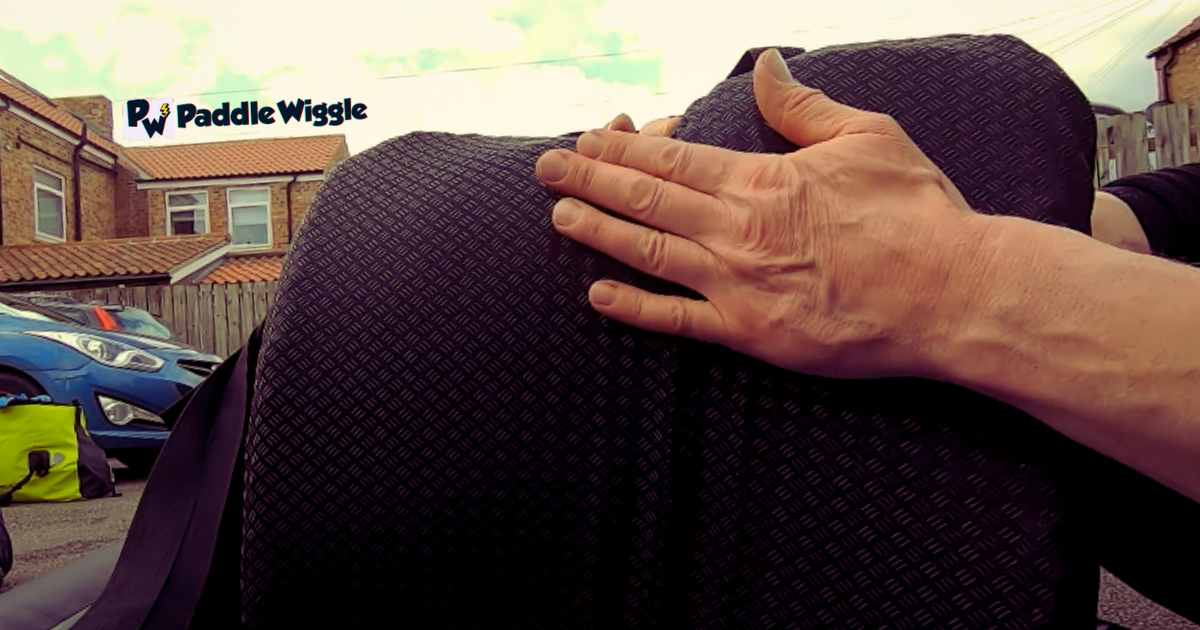

The first step is selecting a suitable kayak seat cushion. Look for one that meets your comfort preferences. Consider factors such as thickness, material, and ventilation. Some cushions are designed specifically for kayaking and offer features like moisture-wicking properties.
Step #3: Position and Secure the Seat Cushion
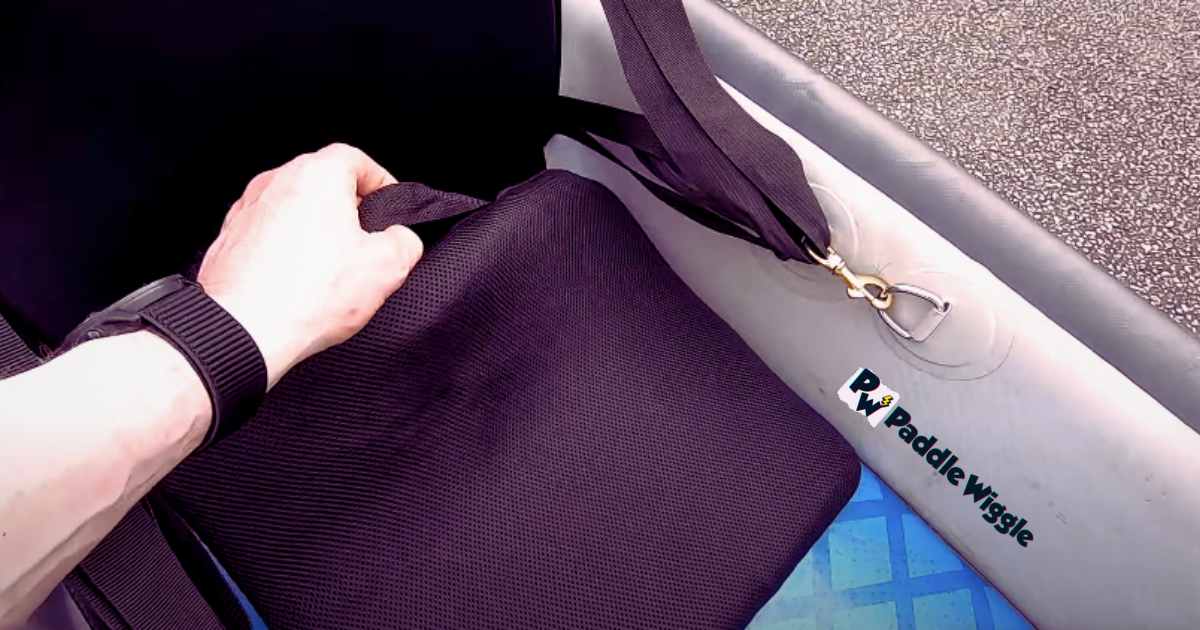

Once you have your chosen seat cushion, it’s time to position it on your kayak seat. Place it on the seat while aligning it with the contours of the seating area. Ensure that it is centered properly for maximum comfort.
Next, use zip ties or adjustable straps to secure the seat cushion firmly to the kayak seat. Fasten them tightly to prevent any shifting during paddling.
Step #4: Additional Comfort Adjustments
If you desire, you can make your seat more comfy by putting foam or extra padding in certain parts of your kayak seat. This can be really helpful if you need more support for your lower back or want to make your legs feel better.
Take some time to test out your modified kayak seat setup by sitting in it. Make any necessary adjustments to ensure it provides the desired level of comfort. Everyone’s preferences are different, so feel free to experiment until you find what works best for you.
Step #5: On-the-Water Test
Now that you’ve made all the adjustments, it’s time to take your kayak out for a test paddle. Pay close attention to how the modified seat feels during different paddling conditions. Notice if there are any pressure points or discomfort that may need further tweaking.
Keep making changes until your seat feels just right when you’re on the water. It might take a few tries to get it perfect, so don’t worry about trying different things.
Benefits of Upgrading Your Kayak Seat
If you’re an avid kayaker, you know the importance of comfort and stability while out on the water. That’s where upgrading your kayak seat comes into play. It doesn’t just make kayaking better, but it also gives lots of good things that both people who kayak for fun and those who do it as a job can like.
Reduce Fatigue and Increase Stability
Getting a better kayak seat has a big advantage. It helps you feel less tired when you’re kayaking for a long time. A comfy seat supports your back well, so you can paddle for a while without feeling uncomfortable or strained. With less fatigue, you can focus more on enjoying your time on the water and exploring new areas.
Moreover, a well-designed kayak seat can significantly increase stability. A good seat spreads your weight out evenly on the kayak, which helps you balance and steer it better. This extra stability makes it easier to paddle through rough waters, so your kayaking trips are safer and more fun.
Enhance Overall Performance
One more reason to think about getting a better kayak seat is how it affects your performance. A comfy seat helps you sit up straight and paddle the right way, making you better at kayaking. When your body is aligned well, you can paddle with more strength in each stroke, which means you can go faster and steer more smoothly.
Furthermore, an ergonomic kayak seat enhances your connection with the boat itself. It fits tightly, so you don’t move around too much, and you can respond quickly to what you want to do. This closer connection between you and the kayak means you can steer better and make turns more easily.
Long-Term Health Benefits
Getting a kayak seat that’s designed for comfort doesn’t just help right away. It’s also good for your long-term health. If you sit in an uncomfortable way for a long time, it can make your back hurt and your muscles get stiff. But, with a seat that’s made to keep your posture good, these problems are reduced.
An ergonomic kayak seat promotes proper spinal alignment, reducing the risk of developing chronic back problems. It also helps alleviate pressure points and provides cushioning for your hips and thighs, preventing numbness and discomfort. By taking care of your body while kayaking, you can continue enjoying this exhilarating activity for years to come.
Adjusting Seat Height for Improved Comfort
It’s really important to feel comfortable when you’re kayaking. One way to make this happen is by changing how high your kayak seat is. This can help you avoid feeling uncomfortable and tired in your lower back, and it will make your paddling more fun.
Different Methods to Raise or Lower Your Seat
There are various ways to adjust the height of your kayak seat based on personal preference and body mechanics. Here are a few methods you can try:
- Using an Adjustable Seat: If your kayak has a new seat with adjustable features, take advantage of it. You can raise or lower the seat according to your comfort level. This allows you to find the perfect balance between sitting high enough for proper posture and low enough for stability.
- Adding Padding: Another option is to add extra padding beneath your existing seat. You can do this by adding foam pads or a stadium seat cushion to give you more support and make it more comfortable. When you add more padding, it lifts your seat up higher.
- Modifying Seat Support: Some people who kayak change their seats by putting in or taking out support stuff like metal tubes or blocks of wood. If you put these supports in the right places, you can make your seat higher or lower to fit you better.
Advantages of Proper Seat Height Adjustment
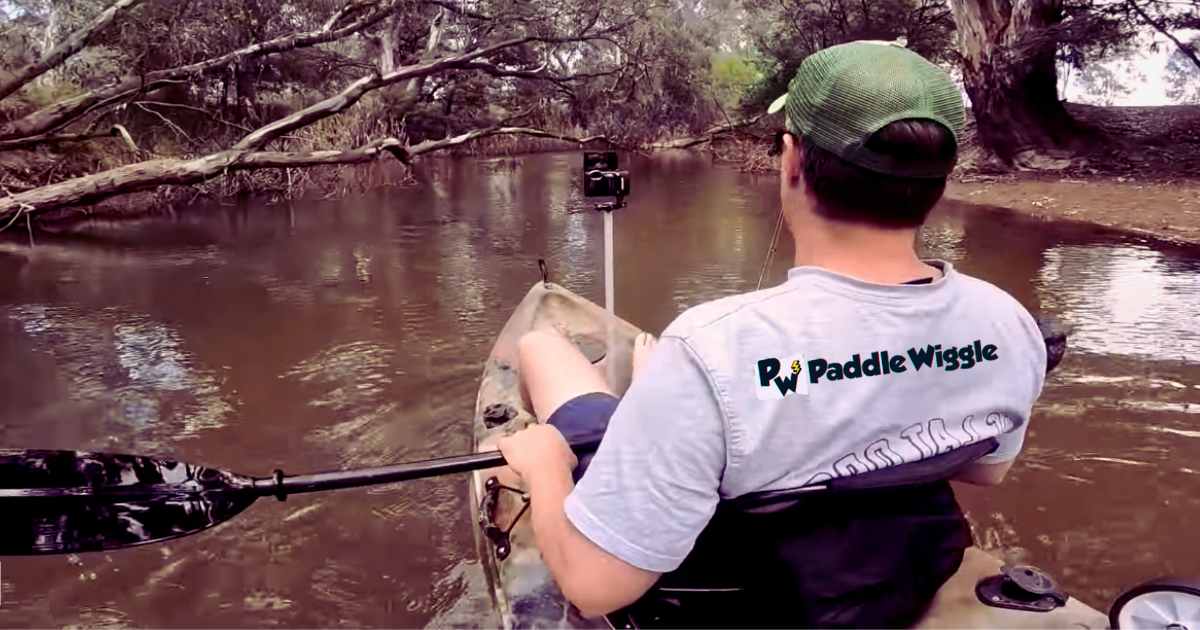

Adjusting the height of your kayak seat not only improves comfort but also contributes to better posture and paddling efficiency. Here’s why finding the right seat height is essential:
- Improved Posture: Sitting at the right height helps keep your back in a good position. This means less pressure on your lower back muscles and no discomfort when you’re kayaking for a long time.
- Enhanced Paddling Efficiency: When seated at an optimal height, you have better control over your paddle strokes as it allows for a more natural range of motion. This increased efficiency translates to less wasted energy and a smoother paddling experience.
- Reduced Pressure Points: When you change the height of your seat, you can make your weight spread out more evenly. This means you won’t get those uncomfortable spots that can make your body feel numb or sore when you’re kayaking for a long time.
Finding the Right Balance
When you change how high your kayak seat is, you have to find a balance between feeling comfy and staying steady. If you lift the seat, it might help your posture and make your back feel better, but it could also make your kayak less stable. Conversely, sitting too low may compromise your paddling efficiency.
Experiment with different seat heights until you find what works best for you. Remember to consider factors such as body mechanics, personal comfort preferences, and the type of kayaking you’ll be doing (e.g., calm lakes versus rougher waters).
If you spend some time getting your kayak seat height just right, you’ll make sure that every time you go kayaking, it’s comfy and fun.
Enhancing Comfort with DIY Seat Cushions
If you’re looking to make your kayak seat more comfortable, there are some cost-effective ways to achieve that extra padding and support. One option is to create custom-made cushions that cater specifically to your needs. Not only can these cushions provide added comfort, but they can also be durable, waterproof, and easy to clean.
Materials for DIY Cushions
There are various materials you can consider. One popular choice is using closed-cell foam, which provides excellent cushioning and support. This type of foam is often used in outdoor gear due to its water-resistant properties. Another option is utilizing inflatable thigh supports or pillows that can be easily adjusted for personalized comfort.
Attaching Homemade Cushions Securely
Once you’ve crafted your DIY seat cushions, it’s essential to attach them securely to ensure they stay in place while paddling. Here are a few tips and tricks:
- Straps or Velcro: Consider attaching straps or Velcro strips to the bottom of the cushion and the kayak seat. This will help keep the cushion from shifting during use.
- Bungee cords: Another option is using bungee cords or shock cords to secure the cushion tightly around the seat. This method allows for easy adjustment and ensures a snug fit.
- Non-slip mat: Placing a non-slip mat between the cushion and the kayak seat can help prevent any sliding or movement while on the water.
Extra Storage Options
When you make your own kayak seat cushion, it’s not just about making it more comfortable. You can also add some extra features, like pockets or compartments, where you can keep small stuff like sunscreen, snacks, or a waterproof case for your phone.
Pros of DIY Seat Cushions
There are several advantages of creating your own kayak seat cushions:
- Customization: DIY cushions allow you to tailor the padding and support to your specific needs and preferences.
- Cost-effective: Creating your own cushions can save you money compared to buying ones that are already made.
- Personal touch: Crafting your own seat cushions adds a personal touch to your kayak, making it truly unique.
Cons of DIY Seat Cushions
While there are many benefits to DIY seat cushions, it’s essential to consider some potential drawbacks:
- Skill level required: Making cushions that are custom-made might require you to have some basic sewing or crafting skills. If you need more confidence in these areas, it may be easier to achieve the desired results.
- Time-consuming: Making your own cushions can be time-consuming, especially if you’re new to the process. It requires careful planning, measuring, and assembling.
Exploring Alternative Seating Options: Lawn Chairs and Stadium Seats
Are you tired of the uncomfortable kayak seats that leave you with aches and pains after hours on the water? If you’re looking for a more comfy way to sit in your kayak, think beyond the regular kayak seat. Surprisingly, you can use portable lawn chairs and stadium seats for extra comfort while kayaking. Let’s see how these unusual choices can make your time on the water better.
Adapting Portable Lawn Chairs for Kayaking
Portable lawn chairs might not be made for kayaking, but with some changes, they can be very comfy and supportive for kayaking. One good thing about using a lawn chair is that it gives you more space compared to regular kayak seats. With its wide seat area, you’ll have more room to sit comfortably without feeling cramped.
To adopt a lawn chair for kayaking, there are a few things you need to consider:
- Stability: Make sure the lawn chair is firmly fastened to your kayak’s deck so it doesn’t shake or tip over.
- Waterproofing: Keep your chair dry by using waterproof coatings or waterproof cushions.
- Storage: Because many lawn chairs can’t be folded up, be sure you have enough room in your kayak to fit them.
While using a lawn chair as an alternative seating option offers enhanced comfort, it also has some drawbacks:
- The added weight of the chair may affect your kayak’s balance and maneuverability.
- It might limit access to storage areas beneath your seat.
- The higher seating position could increase wind resistance.
Embracing Stadium Seats in Your Kayak
Another unconventional seating option worth exploring is stadium seats. These lightweight and easy-to-carry cushions are meant to make sitting more comfortable when you’re watching sports for a long time. But they can also be really helpful when you’re in a kayak.
Here are some reasons why stadium seats could be an excellent choice:
- They are compact and easy to carry, making them ideal for kayakers with limited space.
- Stadium seats often come with adjustable backrests and built-in cushioning, providing customizable comfort.
- Their low-profile design helps maintain a lower center of gravity, enhancing stability in the water.
Before using a stadium seat in your kayak, consider these factors:
- Attachment: Make sure to attach the seat tightly to your kayak so it doesn’t move when you’re paddling.
- Durability: Opt for a stadium seat made from water-resistant materials that can withstand exposure to the elements.
- Comfort: Choose a seat with sufficient padding and back support to ensure maximum comfort during long hours on the water.
While stadium seats offer great advantages, there are also a few things to keep in mind:
- Limited storage options as they may have different compartments like traditional kayak seats.
- The cushioning might compress over time, reducing its effectiveness.
Learn More
Can I use a regular cushion for my kayak seat?
You can use a regular cushion, but you might need more support and longer for kayaking. It’s better to spend money on a special kayak seat pad or cushion made for water activities.
Are high-backed seats suitable for all types of kayaking?
High-backed seats work well for most types of kayaking, such as casual trips and touring. However, if you’re into advanced activities like tackling rough water or making special moves in your kayak, you might need seats that let you move more easily.
How do I know which kayak seat is the best fit for me?
To pick the best kayak seat for you, think about things like your body shape, how you paddle, and what you like. You can also check reviews, ask experienced kayakers for advice, and try out different seats when you can figure out which one works the best for you.
Final Words
Feeling comfortable while kayaking is really important for having a good time outdoors. To make your kayaking trips even better, think about making your kayak seat more comfortable. Remember that achieving optimal comfort goes beyond just selecting the right equipment; it’s also about finding what works best for you personally. So feel free to try out various options until you discover the perfect setup that allows you to paddle in blissful comfort.

